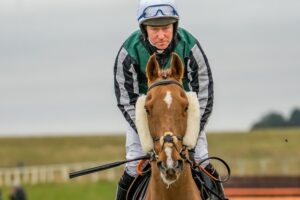It’s an interesting point.
I remember one racing correspondent and pundit (although for the life of me I can’t remember his name) said not betting on a horse trainer when out of form is a mistake.
What do you think?
I guess we all have our opinions. In fact, horse racing is one of those sports we all have an opinion and by the winning line we have our answer to the question. Perhaps. There’s always a reason why a horse should have won or lost even after the result.
Ask Greville Starkey who was vilified for his ride on Dancing Brave in the 1983 Epsom Derby. His whole career seemed to be assessed on that one race.
Harsh when he rode almost 2,000 winners in a Flat racing career that spanned 33 years.
‘It’s just an opinion, hey?’
As an expert in the niche of two-year-old horse racing, I review each and every horse and race throughout the year and trainer form is something I take note. For example, the 2023 Flat season has seen the likes of Ralphe Beckett and Andrew Balding in sparkling form all season. No mean feat when most have peaks and troughs.
While John Gosden, who is normally in flying form has been very much below par. This begs the question: ‘Does this lesser strike rate make me view his chances differently?’
‘You bet it does!’
I think the question of out of form is better assessed by saying, beyond a virus in the stable, that the general standard of horse is lower quality than usual. It happens. And it often catches out the trainer as much as it does the punters. Most two-year-olds gallop with their own age group and it takes time to assess the quality of horses in the stable. I have a multitude of ways to assess any individual horse and it is often noticeable that even those two-year-olds with a very high statistical chance of winning fall short. When this happens, it adds to my reasoning that the quality of horse is much poorer than normal.
When I notice this happening I am very careful backing a trainer’s horses.
Why?
Because they are frustrating and generally disappoint throughout the season. Without doubt, sooner or later, that opinion filters through to the prices and you will see that not only are the horses out of form, the punters (if not the layers) know it too.
So should you be concerned when stables are out of form? I would be. It doesn’t mean they can’t win and we know what follows bad luck (good luck) and the tide will turn at some point.
However, if someone feels they want to take on the burden of an out of form trainer by betting on them: ‘Then, you go, girl!’.
Yes, I’m being sarcastic.
I wouldn’t be betting myself.
I think much of sport – winning – is about momentum. When you have that on side it is like riding the crest of a wave. That is a force which you want onside. The other side of the coin details when a trainer is out of form. If you want to push a boulder up a hill, then you can do so but it’s not the route I would take.
When gambling you need every positive going and to think you can oppose a negative is a problem you don’t need.

 If you love horse racing you have most likely heard of the ‘Golden Couple’ Fitri and James Hay.
If you love horse racing you have most likely heard of the ‘Golden Couple’ Fitri and James Hay. Rupert ‘Ruby’ Walsh announced his retirement from the saddle, with immediate effect, on May 1, 2019, having ridden Kemboy, trained by Willie Mullins, to victory in the Punchestown Gold Cup. Of course, Walsh had enjoyed a long, lucrative affiliation with the County Carlow handler, becoming stable jockey at Closutton on his return to his native Ireland in 2013. He said afterwards, ‘ I think I knew going out that if he won I wouldn’t ride again.’ Mullins, for his part, said, ‘Ruby was fantastic there, I’m delighted for him.’
Rupert ‘Ruby’ Walsh announced his retirement from the saddle, with immediate effect, on May 1, 2019, having ridden Kemboy, trained by Willie Mullins, to victory in the Punchestown Gold Cup. Of course, Walsh had enjoyed a long, lucrative affiliation with the County Carlow handler, becoming stable jockey at Closutton on his return to his native Ireland in 2013. He said afterwards, ‘ I think I knew going out that if he won I wouldn’t ride again.’ Mullins, for his part, said, ‘Ruby was fantastic there, I’m delighted for him.’